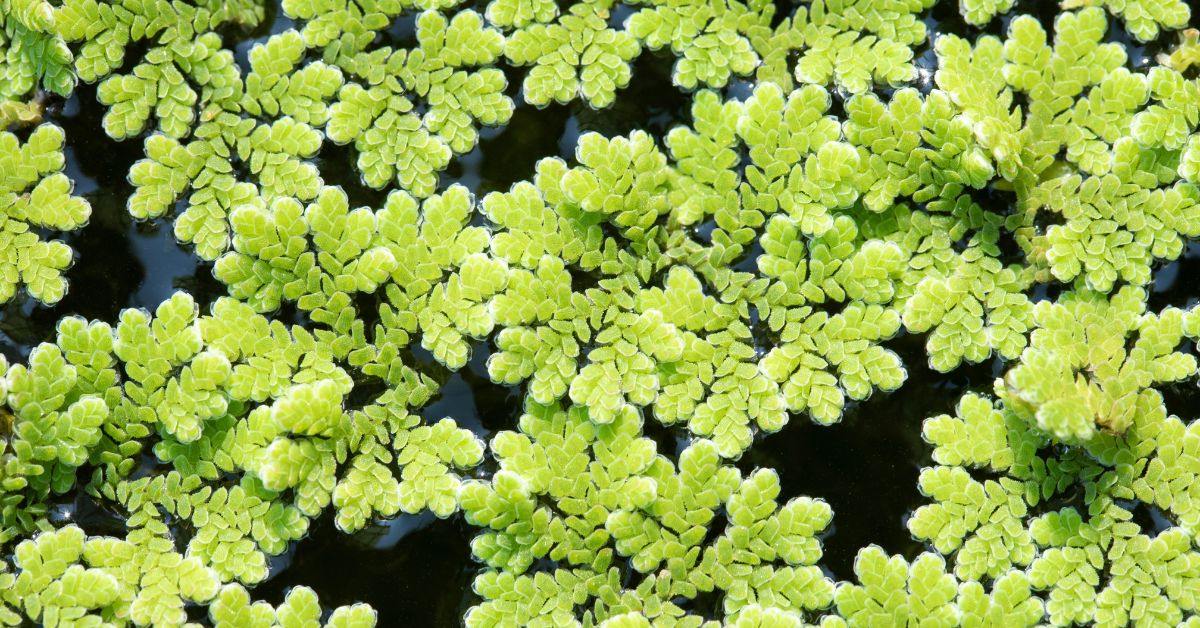(Representational image courtesy Village Square)
Have you noticed a plant with tiny, delicate leaves arranged in overlapping clusters forming a mat-like structure in freshwater environments like ditches, ponds, and lakes?
This is Azolla. Often referred to as the ‘water fern,’ it is quickly gaining attention as a sustainable and low-cost solution for Indian farmers. This fast-growing aquatic plant is not only a powerful nitrogen fixer but also a highly nutritious feed for livestock, making it a valuable addition to farming systems across the country.
Azolla’s ability to thrive in a variety of environments and its minimal resource requirements make it an ideal candidate for boosting the agricultural economy, especially in rural areas.
Why is Azolla beneficial?
One of the key benefits of Azolla is its role in nitrogen fixation. The plant forms a symbiotic relationship with a specific species of algae (Anabaena), which helps it absorb nitrogen directly from the atmosphere.
This reduces the need for chemical fertilisers, which are both costly and harmful to the environment. By fixing nitrogen in the soil, Azolla can enrich the land for future crops, promoting healthier soil and better yields.
Additionally, Azolla serves as an excellent, affordable feed for livestock. Rich in protein, essential amino acids, and minerals, it offers a nutritious alternative to traditional animal feeds like soy or maize, which are often expensive and require substantial agricultural resources to produce.
In particular, Azolla has proven beneficial in feeding poultry, fish, and cattle, improving their health, growth rates, and milk production. As farmers look for alternatives to expensive commercial feeds, Azolla presents an eco-friendly and cost-effective solution. It also restricts the mosquito breeding process, which is why it is also called a ‘mosquito fern.’
Azolla also contributes positively to water conservation. Since it grows in water, it requires minimal soil, making it perfect for regions with limited land or poor soil quality. Moreover, its high rate of biomass production means it can be harvested regularly, providing a continuous supply of feed or fertiliser without depleting the environment.
A guide to growing azolla
Growing Azolla is a straightforward process that requires minimal investment and maintenance, making it accessible even for small-scale farmers. Here’s how to successfully cultivate it:
1. Water quality: Azolla flourishes in water with a neutral pH (6-7). Ensure the water is clean and free from any pollutants.
2. Setting up the culture: Choose shallow, stagnant water bodies such as ponds, tanks, or ditches. You can also grow it in containers if space is limited. The depth should not exceed 30-40 cm.
3. Temperature: Azolla grows best in warm conditions, with an ideal temperature range of 25-30°C. Avoid growing it in water temperatures below 20°C.

4. Planting: Spread Azolla on the water surface in a thin layer. It will quickly multiply, covering the water in a few days. You can use Super Phosphate along with cow dung slurry to add the required phosphorus for growth.
5. Maintenance: Azolla requires little attention, but regular harvesting is important. This encourages continuous growth and prevents the water surface from becoming overcrowded.
6. Harvesting: Azolla can be harvested every 5 to 7 days. Simply skim the surface to collect the plant. Use it fresh or dry it for storage.
After a two-week start of harvesting, from a pond of 2m X 2m, you can harvest 1kg of Azolla each day.
By incorporating Azolla into farming systems, Indian farmers can reduce costs, improve productivity, and contribute to environmental sustainability. With the right conditions, Azolla is a highly adaptable and resource-efficient plant that can offer both economic and ecological benefits. As awareness of its advantages grows, Azolla is poised to become a key component of India’s agricultural future.
Edited by Vidya Gowri
No comments:
Post a Comment